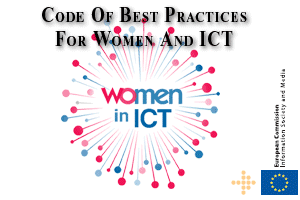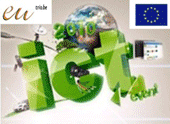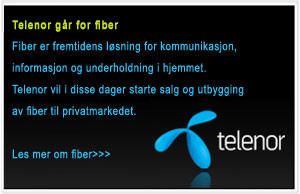|

189 participants from 16 European countries Belgium, Estonia, Finland, France, Germany, Greece, Hungary, Iceland, Italy, Latvia, Malta, Norway, Poland, Sweden, United Kingdom, Åland and Gabon, Senegal and the USA, the European Commission and the Nordic Council participated on the 19th of October in Stockholm at the Nordic Conference on Women's Entrepreneurship with a Focus on Women's Resource Centres as Key Drivers of Regional Growth supported by the Nordic Council of Ministers, Nordregio, the Swedish Ministry of Entrepreneurship, Energy and Communications, NUTEK, the Swedish Association of Local Authorities and Regions, the Finnish Ministry of Interior, the FEM project, Luleå University of Technology, the County Administrative Board of Södermanland and NRC - The Swedish National Federation of Resource Centres for Women.
Welcome by
Britt-Marie S Torstensson, the President of WINNET Europe
Britt-Marie_S_Torstensson_Stockholm_2007..pdf 
Halldór Asgrimsson, Secretary General of the Nordic Council of Ministers
Halldor_Asgrimsson_Stockholm_2007.pdf 
Sune Halvarsson, Acting Director General of NUTEK, the Swedish Agency for Economic and Regional Growth:
Sune_Halvarsson_Stockholm_2007.pdf 
Keynote Speakers
Danuta Hübner, Commissioner for Regional Policy
Collaboration and innovation stood in the focus of the conference where good examples of WRCs role in regional development in Europe were elaborated. Commissioner Danuta Hübner stressed that ' The creative and entrepreneurial potential of women is certainly the biggest single and clearly underutilized resource. If we in Europe succeed in channelling this potential into the market economy we will make a huge leap forward both with regard to the attitudes prevalent in European societies and the Union's agenda for more growth and jobs and competitiveness. ' The Commissioner also emphasized that ' Getting more women into decision making positions, however, is the key to everything. Women can promote their case, rally, market their agenda, but the real power lies in decision making!'
When talking about future actions and what we can expect from Cohesion Policy in 2007-13 the Commissioner pointed out three key issues:
- Cohesion Policy approaches gender in a dual way: (1) through specific actions to promote equality or to combat discrimination and (2) by taking careful account of how projects and the management of the funds may affect women and men.
This dual approach is laid down in the General Regulation covering the ERDF, ESF and Cohesion Fund (Art. 16) and the equality principle referred to in a multitude of Articles. Moreover, we encourage Member States and regions to pursue the objective of equality between men and women at all stages of the preparation and implementation of programmes and projects.
The Community Strategic Guidelines also suggest specific actions, such tailored support to female entrepreneurs, including access to finance, and actions to reduce occupational segregation, gender pay gaps, gender stereotyping and actions to promote family-friendly environments.
Gender mainstreaming, if taken seriously and done properly, can help to drive productivity, growth, and economic development in a balanced manner. Sweden is a good example: In order to improve the gender assessments of Cohesion Policy projects, some of the Swedish Management Authorities have virtually abolished the possibility to classify projects as ”gender neutral”. This forces the project owners to consider gender impact more carefully.
- EU Cohesion Policy puts an important principle into action: Partnership, one of the virtues of the policy. Cohesion policy empowers local people and helps growth strategies by targeting local resources. Cohesion policy reinforces the co-operation between the public and private sector. And last but not least this partnership principle empowers women, even if, at the local level, the challenges remain important.
- Cohesion Policy has always focused on long term change and on overcoming structural barriers to development. Moreover, the renewed regional policy has shifted towards investments inducing endogenous growth and fostering innovation. If more women become active in the market economy, this would simultaneously support all these objectives.
The full presentation:
Commissioner_Danuta_Hubner_Stockholm_2007.pdf 
Maud Olofsson, Deputy Prime Minister and Minister of Entrepreneurship
The Swedish Deputy Prime Minister - who herself was led a WRC and in 1994 when she worked as a political advisor to the minister of employment worked on the bill that provides the financing for the WRCs - underlined that ' Women’s Resource Centres and their tools satisfy – along with other actors in this field – needs, at local, regional and national level.
Networks, international and domestic, working with gender issues are very important for sharing experiences in Sweden, Europe and in the world as a whole. It’s of great value for me and the Swedish government that knowledge and experiences generated within the WINNET project are supported and spread. ' And added that 'The primary task and mission of resource centres is to broaden and deepen democracy and increase the number of women participating in economic life on a regional and local level. One of the fundamental concepts of resource centres and networks is that they develop and grow out of local needs. '
The full presentation:
Maud_Olofsson_Stockholm_2007.pdf 
Tarja Cronberg, Minister of Employment, Finland
The Finnish Minister of Employment stressed that the challange is 'to bring in a wider interpretation of innovations and to establish tools and measures to employ women’s potential in the innovation and development work.' The Minister refererred to ' a recent comprehensive study in Finland, which showed that companies lead by a woman were 10 % more profitable than the same size companies lead by a man. The study examined 14 000 Finnish companies with more than 10 employees.' But added that 'In 2002 of the employed IT professionals 70% were men.'
The Minister pointed out that 'It is important to work in two fronts: First, in finding measures to narrow down the gender segregation in labour market, for example it-technology. Secondly, by acknowledging the competence of women in markedly female sectors and recognising these as fields of innovation. This requires new and wider interpretation of innovations, new and open way of thinking and mobilisation of existing resources.'
The full presentation:
Fostering_innovations_Stockholm_2007.pdf 
Katarina Pettersson, NORDREGIO
If Regional Policy was gender-equal - The Research perspective
Katarina_Pettersson_Stockholm_2007.pdf 
Workshop Introductions

Workshop-1_Introduction.pdf

Workshop-2_Introduction.pdf 

Workshop-3_Introduction.pdf 

Workshop-4_Introduction.pdf 
|






























